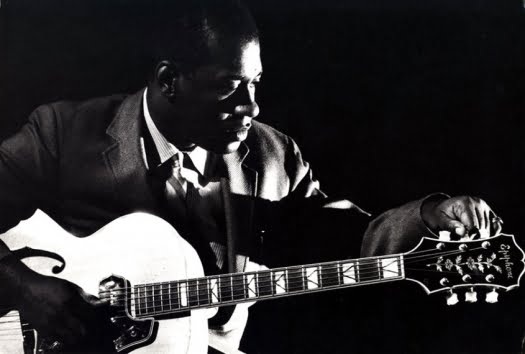06.06. – Happy Birthday !!! Green was born on 1931 in St. Louis, Missouri. He first performed in a professional setting at the age of 13. His early influences were Charlie Christian and Charlie Parker; however, he played extensive R & B gigs in his home town and in East Saint Louis, IL while developing his jazz chops.
His first recordings in St. Louis were with tenor saxophonist Jimmy Forrest for the Delmark label. Lou Donaldson discovered green playing in a bar in St. Louis. After touring together with Donaldson, Green arrived in New York around 1959-60. In a Down Beat interview from the early 60’s, Green said “The first thing I learned to play was boogie-woogie. Then I had to do a lot of rock and roll. It’s all blues, anyhow.”
Lou Donaldson introduced Green to Alfred Lion of Blue Note Records. Lion was so impressed that, rather than testing Green as a sideman, as was the usual Blue Note practice, he arranged for him to record as a bandleader first. This recording relationship was to last, with a few exceptions, throughout the ‘sixties. From 1961 to 1965 Green made more Blue Note LPs as leader and sideman than anyone else. Green was named best new star in the Down Beat critics’ poll, 1962. As a result, his influence spread wider than New York. Green’s first session as a leader did not meet the approval of Lion and was shelved, not to be released until 2002 as First Session. Green’s first issued album as a leader was Grant’s First Stand. This was followed in the same year by two more Blue Note releases: Green Street and Grantstand. He often provided support to many of other great musicians on Blue Note. These included saxophonists Hank Mobley, Ike Quebec, Stanley Turrentine and Harold Vick, as well as organists Larry Young and Big John Patton.
Sunday Mornin’ , The Latin Bit and Feelin’ the Spirit are all loose concept albums, each taking a musical theme or style: Gospel, Latin and spirituals respectively. Green always carried off his more commercial dates with artistic success during this period. Idle Moments (1963), featuring Joe Henderson and Bobby Hutcherson, and Solid (1964) are acclaimed as two of Green’s best recordings. Many of Green’s Blue Note recordings, including a series of sessions with pianist Sonny Clark were not released during his lifetime. In 1966 Green left Blue Note and recorded for several other labels, including Verve. From 1967 to 1969 Grant was inactive due to personal problems. In 1969 Green, having relocated to Detroit, returned with a new funk-influenced band. His recordings from this period include the commercially successful Green is Beautiful and Live at the Lighthouse. Grant left Blue Note again in 1974 and once again recorded sporadically for different labels.
Green spent much of 1978 in hospital and, against the advice of doctors, went back on the road. While in New York to play an engagement at George Benson’s Breezin’ Lounge, Green collapsed in his car of a heart attack on January 31, 1979. He was buried in his hometown of St. Louis, Missouri, and was survived by six children.







More Stories
CD review: George Benson – Dreams Do Come True: When George Benson Meets Robert Farnon – 2024: Video, CD cover
The band was tight as ever. The Warren Haynes Band cuts loose: Video, Photos
Interview with Alvin Queen: Feeling Good – I heard these tunes played by … Video, new CD cover, Photos